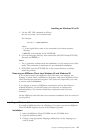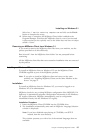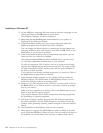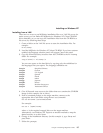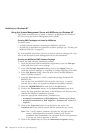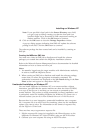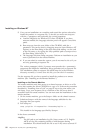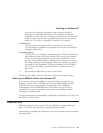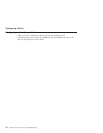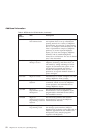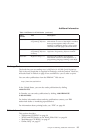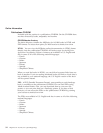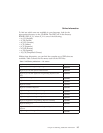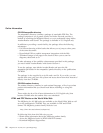
you omit the -g<logfile> parameter, Setup creates a file called
amqilogn.txt in the data-files folder on the machine running the
installation. In this case, any messages generated before the data-files
folder is created are lost. The -g<logfile> parameter must be placed
before the -f1 and the -s parameters, otherwise it is ignored.
<responsefile>
The full path to the response file you prepared. If you omit the
-f1<responsefile> parameter, the response file must be in the Setupxx
language subdirectory.
<secondarylogfile>
The full path to a secondary installation log file. This file contains less
detail than the other log file and should not be used as the primary
source for information about the success of the installation. If you
omit the -f2<secondarylogfile> parameter, Setup attempts to create a
file called setup.log in the language subdirectory (Setupxx), which is
not possible if the installation is being performed from a CD-ROM.
The -f2<secondarylogfile> parameter must be placed after the -f1
parameter.
-s This parameter tells Setup to run in silent mode.
Enclose the long path name and file name expressions in double quotes.
Removing an MQSeries Client from Windows NT
If you want to remove the MQSeries client files from your machine, use
Settings/ Control Panel/ Add-Remove. First select IBM MQSeries Client,
which launches the install program. Alternatively, choose MQSeries
Uninstallation from the IBM MQSeries client folder. You can choose to
uninstall one or more components or the whole of the MQSeries client,
including or excluding data.
For more information on uninstalling an MQSeries for Windows NT client, see
the MQSeries Clients book.
Classes for Java
MQSeries classes for Java version 5.1.1 are available as a SupportPac from
http://www.ibm.com/software/ts/mqseries/txppacs/ma88
Instructions for installing the classes are given in the readme that accompanies
the SupportPac.
Installing on Windows NT
Chapter 7. Installing MQSeries Clients 89



